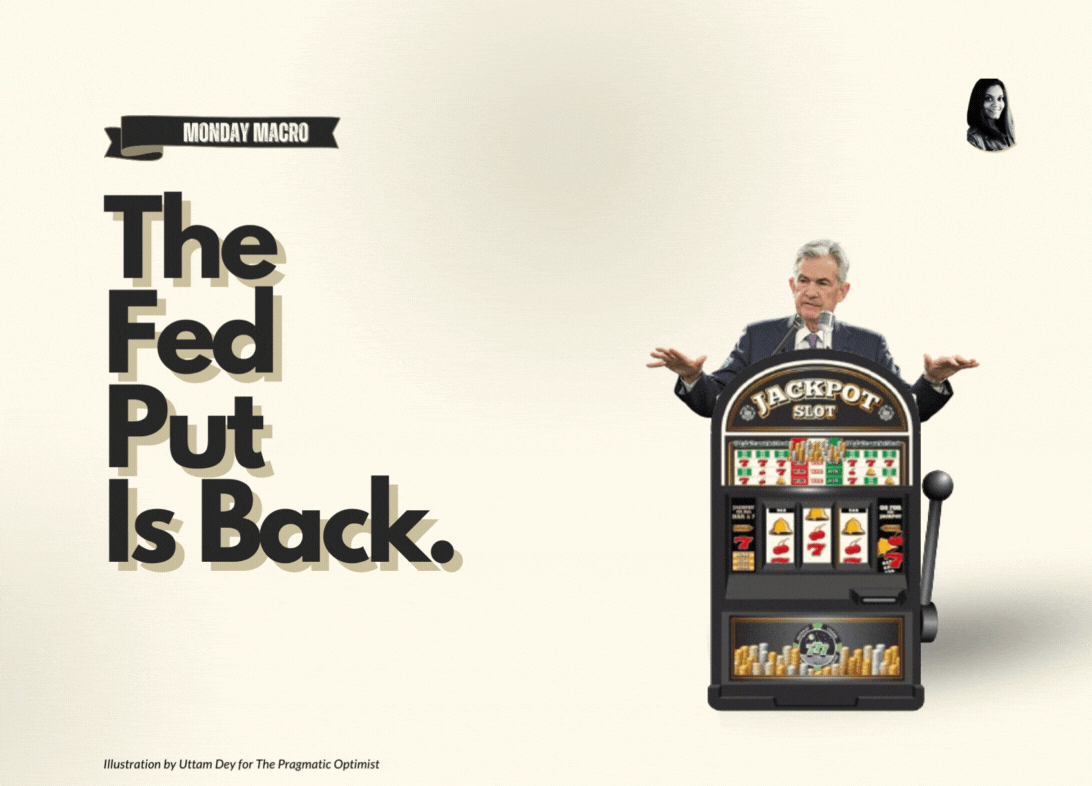Powell Speech Takeaways: Fed Put Is Back!!!
Federal Reserve Chair Jerome Powell’s speech at Jackson Hole signaled a shift in focus: the Fed is increasingly concerned about downside risks in the labor market and views tariff-driven inflation as

Federal Reserve Chair Jerome Powell’s speech at Jackson Hole signaled a shift in focus: the Fed is increasingly concerned about downside risks in the labor market and views tariff-driven inflation as temporary. This effectively leaves the door wide open for a September rate cut.
Powell’s message was clear—he will backstop the economy. If the jobs market falters, rates will be cut. Inflation overshoots? That’s transitory.
Following Powell’s remarks, investors raised bets on a September FOMC rate cut. Market odds jumped from around 75% before his speech to above 90% now.
U.S. equities and gold surged, while the dollar index tumbled.
“The stability of the unemployment rate and other labor market measures allows us to proceed carefully as we consider changes to our policy stance,” Powell said in Jackson Hole. “Nonetheless, with policy in restrictive territory, the baseline outlook and the shifting balance of risks may warrant adjusting our policy stance.”
Powell noted that labor force growth slowed sharply this year due to reduced immigration, leaving the labor market in a “curious kind of balance.” Both labor supply and demand have decelerated markedly. He cited July employment data, showing job growth in recent months was substantially weaker than previously reported.
This anomaly suggests rising downside risks, which could suddenly materialize in the form of mass layoffs and a sharp spike in unemployment.
Inflation as temporary
As for the Fed’s other mandate—controlling inflation—Powell indicated he views tariff-related inflation pressures as temporary.
He stressed that the Fed must guard against President Donald Trump’s tariffs leading to persistent inflation. While the effects on consumer prices are “now clearly visible,” he said it is reasonable to expect they will be relatively short lived.
Given the labor market’s clear slowdown and growing downside risks, the feared wage–price spiral looks increasingly unlikely.
Powell’s stance is backed by data showing that household inflation expectations remain stable.
Powell also announced the end of the “average inflation targeting” framework, re-anchoring policy on a single 2% inflation target.
The average inflation target was introduced during the pre-2020 era of persistently low inflation, aimed at guarding against deflation. The framework allowed inflation to run above 2% for some time if it had run below target for years, so that long-term averages converged to 2%.
However, inflation surged in 2021, and the Fed mistakenly judged it as transitory, responding too slowly. By 2022, realizing the error, the Fed launched aggressive rate hikes that severely hit capital markets. As a result, the average inflation targeting framework faced widespread criticism.
Disclaimer: The views in this article are from the original Creator and do not represent the views or position of Hawk Insight. The content of the article is for reference, communication and learning only, and does not constitute investment advice. If it involves copyright issues, please contact us for deletion.